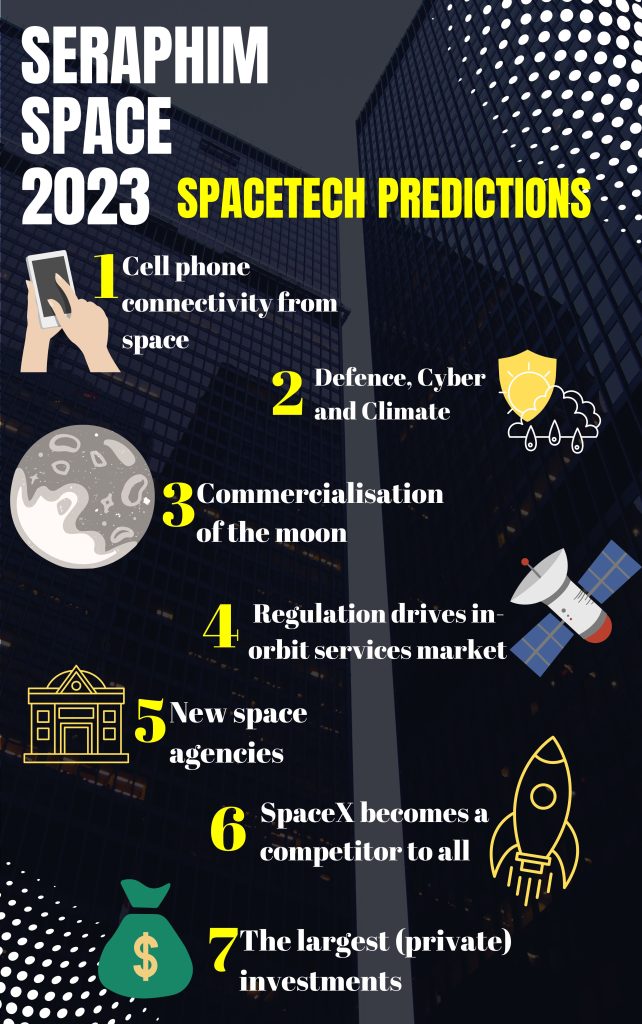Seraphim 2023 Predictions Released
24th Jan 2023
Increased phone connectivity from space, more space agencies, and boosted in-orbit services are among the top space industry predictions for 2023. According to space tech investment company Seraphim in its latest predictions report of this year’s biggest trends, this will be a pivotal time for the industry, especially in the commercial realm.
The company expects the commercialisation of the moon to grow and hopes more industries will recognize space as an important tool in combatting climate change. See the full predictions report here.

Cell phone connectivity from space
While Seraphim doesn’t predict that by the end of the year, everyone will have access to connectivity streaming directly from satellites, it seems that many companies have “set their sights” on direct-to-mobile connectivity from space to reach the most unconnected areas. While many companies have announced the development of this service, it will still likely provide basic internet access – or low-bandwidth connectivity – for people who live in areas far away from standard cellular networks, which make up about 20% of the United States. For example, T-Mobile and SpaceX announced in August 2022 it would use Starlink’s satellites in low Earth orbit and T-Mobile’s mid-band 5G spectrum to provide coverage across all of the US, including “mobile dead zones”.
Seraphim believes that these plans will “address the currently underserved population around the world which does not live within reach of traditional cell tower networks”.
More space agencies
Currently, there are just under 80 government space agencies across the world – but that number is set to grow in 2023. According to Seraphim, 2021 saw four new space agencies created, and the company expects more to begin in 2023 in Croatia, Iceland, Oman, Yemen, Singapore, and a combined African Space Agency. While several agencies across the world have dominated the use of space for the most part, such as NASA, Roscosmos, ESA, and China, the time for global access to space is now, especially with increasing plans to return to the Moon, and explore Mars. Seraphim says:
“With these emerging global space agencies will come greater cooperation in space and greater progress towards in-space and cislunar activities.”
In-orbit services to grow
With mega constellations launching and spacecraft exploring the Moon, Mars, and beyond, in-orbit services are now paramount to the ongoing success of space infrastructure. Seraphim noted that because space sustainability has become the number one priority for agencies and regulators globally, in-orbit services that focus on space debris or spacecraft longevity will see higher demand. This is also on top of the FCC’s decision to reduce de-orbiting post-mission from 25 years to just five years. With these changes, Seraphim says this is “great news” for in-orbit service companies who are responsible for debris removal, life extension services, refueling services, and in-orbit manufacturing.





Thank you for your comment! It will be visible on the site after moderation.